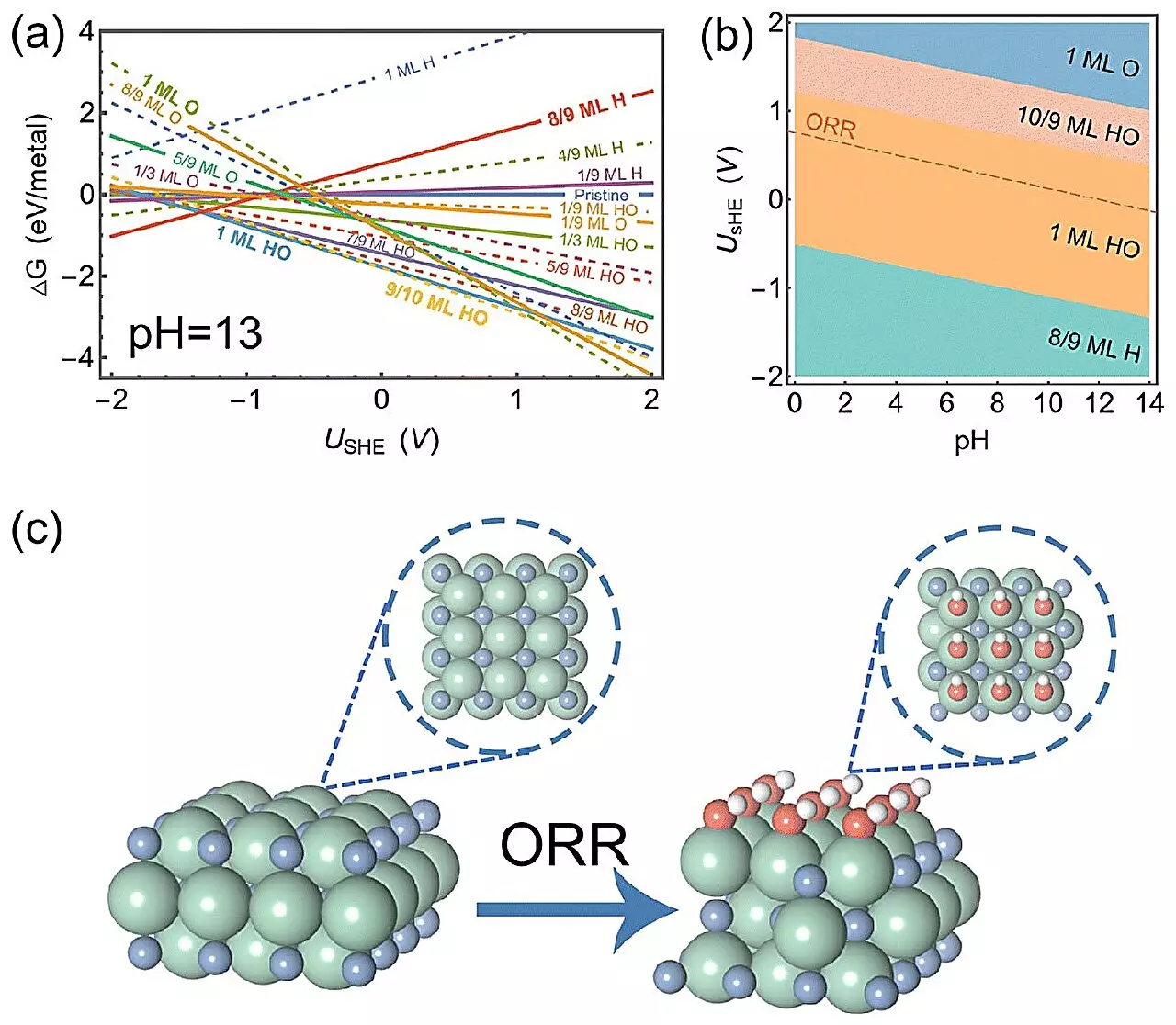Zirconium nitride (ZrN) has recently emerged as a promising material for powering clean energy reactions. With its efficient performance and cost-effectiveness compared to alternatives like platinum, ZrN offers a viable solution for generating cleaner energy. Researchers have made significant progress in understanding the underlying mechanisms behind the impressive performance of ZrN, providing a framework that can guide future designs for transition metal nitrides.
To shed light on the enigmatic properties of ZrN, the researchers employed surface state analysis, electric field effect simulations, and pH-dependent microkinetic modeling. The surface analysis revealed that ZrN develops a thin layer of HO during the oxygen reduction reaction (ORR), which plays a crucial role in enhancing its performance. This thin layer facilitates the attachment of molecules in a way that promotes the ORR.
The electric field effect simulations further demonstrated that atomic oxygen adhering to the thinly covered surface of ZrN undergoes minimal changes, allowing for moderate sticking. These findings not only provide insights into the behavior of ZrN but also offer a general understanding of similar materials like Fe3N, TiN, and HfN. This means that the proposed framework can be extended to rationalize the utilization of these materials for clean energy reactions as well.
The ability of anion exchange membrane fuel cells (AEMFCs) to operate in alkaline conditions makes them an ideal environment for earth-based catalysts, including ZrN. By utilizing ZrN as a catalyst for the ORR in alkaline media, AEMFCs can generate clean electricity through chemical reactions involving hydrogen and oxygen. This offers a more cost-effective alternative to catalyst materials like platinum, paving the way for cleaner energy solutions.
Building upon the success of their research, the team led by Associate Professor Hao Li plans to extend the proposed framework to investigate other industrially significant reactions, such as the oxygen evolution reaction. By applying their theoretical framework to these reactions, they aim to further optimize the design and performance of transition metal nitrides for various clean energy applications.
The study on ZrN has unravelled the mysteries behind this remarkable material, highlighting its potential for powering clean energy reactions. Through surface state analysis, electric field effect simulations, and pH-dependent microkinetic modeling, researchers have gained valuable insights into the behavior of ZrN and similar transition metal nitrides. This knowledge will aid in the rational design and utilization of these materials, bringing us closer to a cleaner and more sustainable energy future.


Leave a Reply